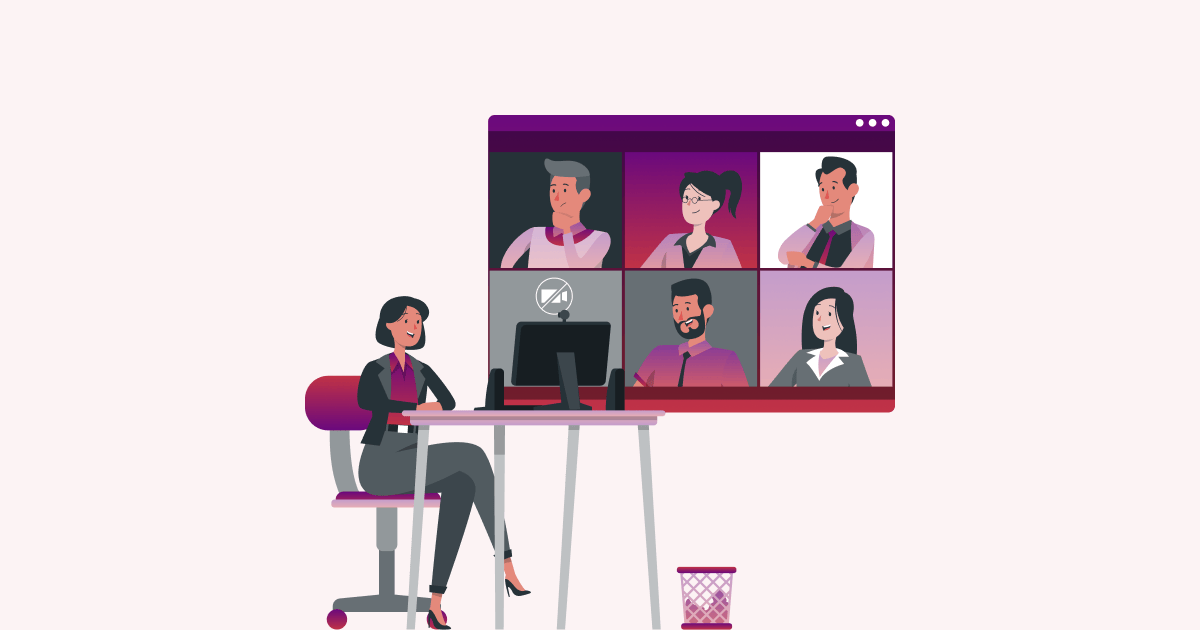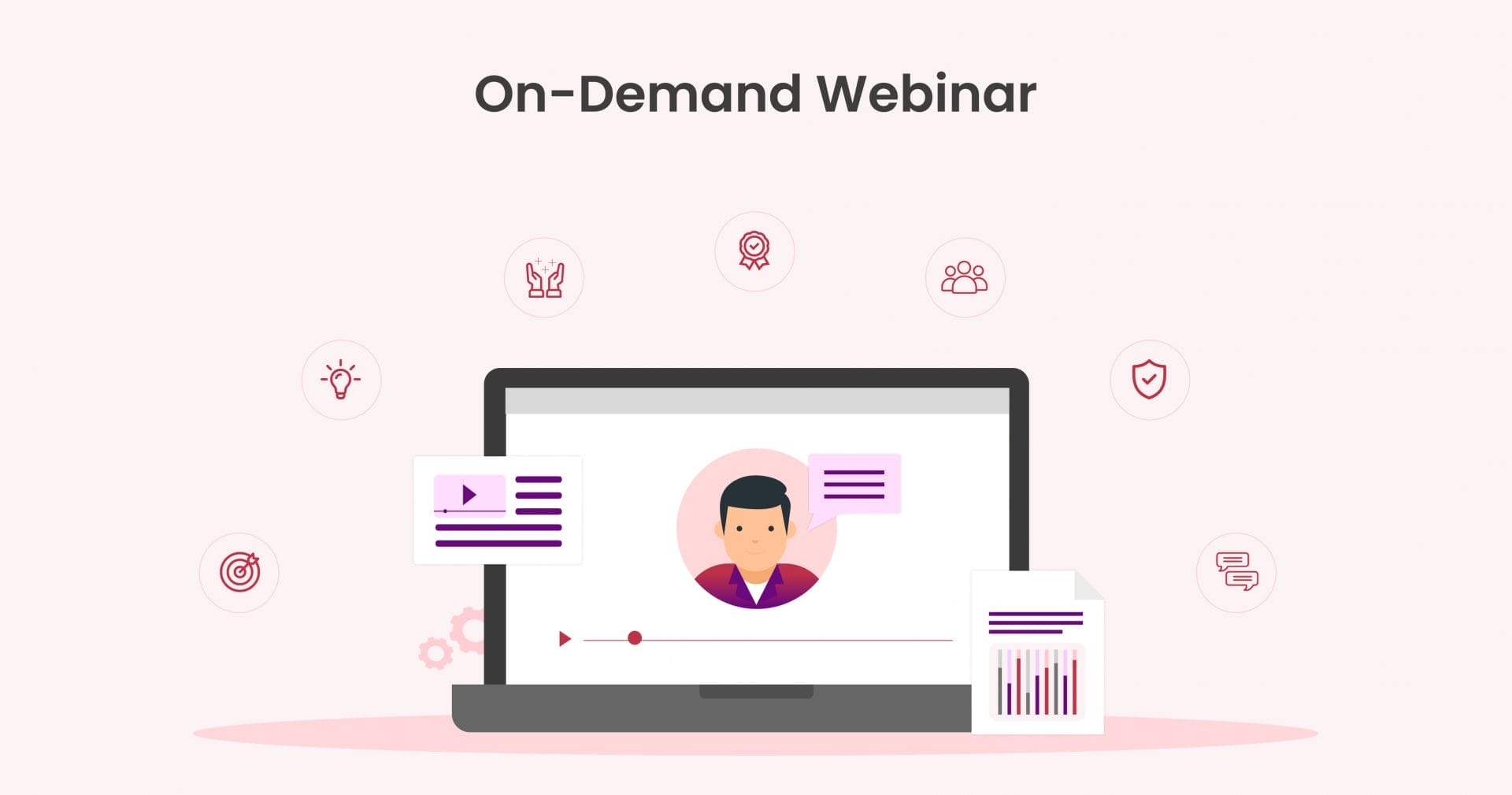Today, there exist wider choices for gathering, like-minded, brainstorming, or even casually discussing some ideas. Panel Discussions are one way of having a forum of academically-inclined, and industry-experienced people getting together similarly! All the while having an audience participating from the comforts of their computing devices or even smart handhelds! Panel Discussions meaning group discussions through webinars, are, now, the most sought-after avenues for group conversation topics that requisite a handful of experts and an audience that is willing and looking for insights or opinions from subject matter experts.
So, how would you go about organizing a Panel Discussion? Here’s a short How-To course that describes a few of its nitty-gritty!
What is a Panel Discussion? What are its Pre-Requisites?
A panel discussion is a group of expert guest speakers gathered together for a discussion, who form the panel. This discussion can go on for at least up to an hour; maybe more depending on the agenda and schedules. It aims to put forth different perspectives, facts & figures, objectives, ideologies, and observations about the topic of discussion. The group also includes a panel discussion moderator who handles the reins, directing the discussion until the end, along with involving the audience through an interactive session!
So, to begin with, How to host a panel discussion, that holds your audience’s attention until the end?
Panel experts and a moderator keep the conversation flowing through an interactive video platform, such as a webinar! Let’s see in further detail, beginning with understanding the different types of discussions you can host.
Types of Panel Discussion formats, for different purposes
Such group discussions of different structures may be organized for various purposes, depending on the subject.
1. In-Person Panel Discussion
Usually held in a large venue, such as an auditorium or conference room, with a table or a stage. The panelists chair the seats, taking on a structured conversation ensuing their introduction by a facilitator. It’s dynamic, often involving audience interactivity through them asking questions pertaining to the topic. You can host this through the Live Webinar medium since it will include live participants only!
2. Hybrid Panel Discussion
An increasingly popular format, a hybrid panel discussion provides greater flexibility to attendees and less demanding video conferencing equipment requirements. Essentially, it combines in-person and virtual audiences onto a singular platform, where the audience shares their questions, comments, and ideas in real time during the discussion. This makes it even more interactive, and increases the entertainment factor! This type calls for choosing between live or evergreen webinars, since you can go with recording your discussion, and airing it to live participants too!
3. Virtual Panel Discussion
Through popular webinar platforms, these panel discussions are highly interactive, often involving whiteboards, polling, and even Q&A sessions! Your audience can join in quickly and easily through a short signup, and participate on the scheduled day. Evergreen webinars are the best way to organize these types of panel discussions for extended involvement and interactivity through the webinar discussion.
Now that we know understand there are different types of panel discussions, let us guide you through how to organize and run one successfully!
How To Host A Panel Discussion?
Let us begin by describing how to prepare for this event as under:
1. Select a Relevant Topic that currently needs focus or coverage on
If you have shortlisted the panelists, you can consult them on topics of interest to the audience, as well as to the panelists too! If the discussion is regarding a specific audience or an industry, that must be decided upon after considering current trends or hot topics!
2. The Need for an Experienced Moderator
To engage and involve the audience, a capable host must become the moderator. A skillful, knowledgeable moderator quickly grasps the subject or topic, connects with the audience, and mingles with the panelists. A moderator must get the panelists to contribute their best during the discussions, while also eliciting responses and involvement from the audience!
3. Handpicking Experts as Panelists
The panelists in a discussion are the precursors to setting the stage and the environment. Shortlisting individuals originating from diverse groups, holding subject matter expertise and authority, and characteristic charisma leverages your discussion significantly! Having between 3 to 5 guests is sufficient for carrying on conversing without the flow ever ebbing out! Do note, that selecting panelists who are not stage-shy, and if possible, avoid personalities who are aggressively dominant in discussions or public speaking.
4. Create a discussion event landing page
Once you’ve set the idea in motion, create a landing page describing the topic, the panelists, and the scheduled event date. Additionally, create a registration link for social media icons and social media icons for the audience. This helps gain greater coverage and more individuals registering for the discussion!
Now let’s see, How to Start and End a Panel Discussion.
Beginning the Discussion Event
Once the stage is set, and the participants are ready on the day of the event, all you need to do is get the ball rolling. You can host your discussion as a Live Webinar or an Evergreen Webinar. A more convenient and better option is the Evergreen Webinar. You can record your panel discussion, and host it repeatedly as many times as you wish! Through this, you can connect with newer audiences at every run through an evergreen webinar!
As the discussion goes live, through the webinar platform, you can follow these simple steps until you call for the closing, and call the curtains on the panel discussion.
- Begin with introducing the panelists through a brief introduction of each, emphasizing on their qualifications and accomplishments. Also, set the agenda by announcing the primary topic, and the relevancy of the discussion about it.
- If you have decided on a particular structure or format to follow, you should announce it next, for the panelists to adhere to it, and the audience to follow the flow of it.
- If there is time or a slot for a Q&A or interactive session between the panelists and the audience, specify the time, and the opportunity window for the audience to ask queries.
Keeping The Conversation Going
Following this, the panel discussion moderator, in case it is you, must also keep the conversation flowing, through presenting slides or other visuals as necessary. Furthermore, the important panel discussion moderator is required as:
- A master at keeping the discussion going, urging the panelists to express their ideas and opinions freely and in detail, albeit much more lucidly for the audience to stay on track with the panelists.
- At any given point of time, there arises the need for the moderator to intervene; he must excuse himself, and take control of the discussion in his reins, as a facilitator.
- The discussion moderator may also summarize discussed ideas, highlight topics requiring coverage or discussion, or steer the conversation back on track if veering off-topic.
- Prod the panelists using the right thought-provoking and engaging questions to keep the conversation flowing, without introducing any boredom or lack of ideas, or thoughts to contribute to the discussion.
Considering the above, you also need to ascertain what topics you can hold a discussion on. Scour the internet, or even current affairs in your daily newspaper or even social media, to know what is being discussed about much these days. There are several panel discussion topics to debate or discuss on:
- What is the best Plugin for WooCommerce?
- How is WooCommerce Shaping the Future of eCommerce?
- How To Maximize Online Presence?
- B2B Marketing Strategies
These would be some of the relevant topics doing the rounds online nowadays, that will certainly grasp the attention of many an attendee for your discussion.
After going through the event, finally, you need to wrap it up. Here’s how you can go about concluding the discussion.
Wrapping Up Your Panel Discussion
1. Summarize the discussion
After ensuring that the panelists and the audience have gained an understanding of the discussed topics, the moderator must summarize key points and ideas. This helps retain the gist or the takeaways from the discussion. It also creates an urge to be part of the next discussion with the participants.
2. Ask for a few closing statements, from the panelists
You may ask for certain closing or summarizing statements, as takeaways, from the expert panelists. This helps the audience connect with, and also retain many meaningful excerpts from the discussion.
3. Compile recordings, & send them along with Thank-You Notes to all!
Recording the entire panel discussion, and sending it to panelists and audience along with a wonderful, heart-warming ‘Thank You note’! A big thanks to everyone for their time, & participation wins much fanfare and following. You can post these videos on your social media page. Maybe, even have them transcribed to be posted as blogs on your website!
Speaking of which, through WebinarPress, you can have live webinars recorded, or even host pre-recorded webinars of panel discussion members hosted through your website as many times as you want! In fact, an evergreen webinar is one of the most effective avenues for conducting such a discussion event!



